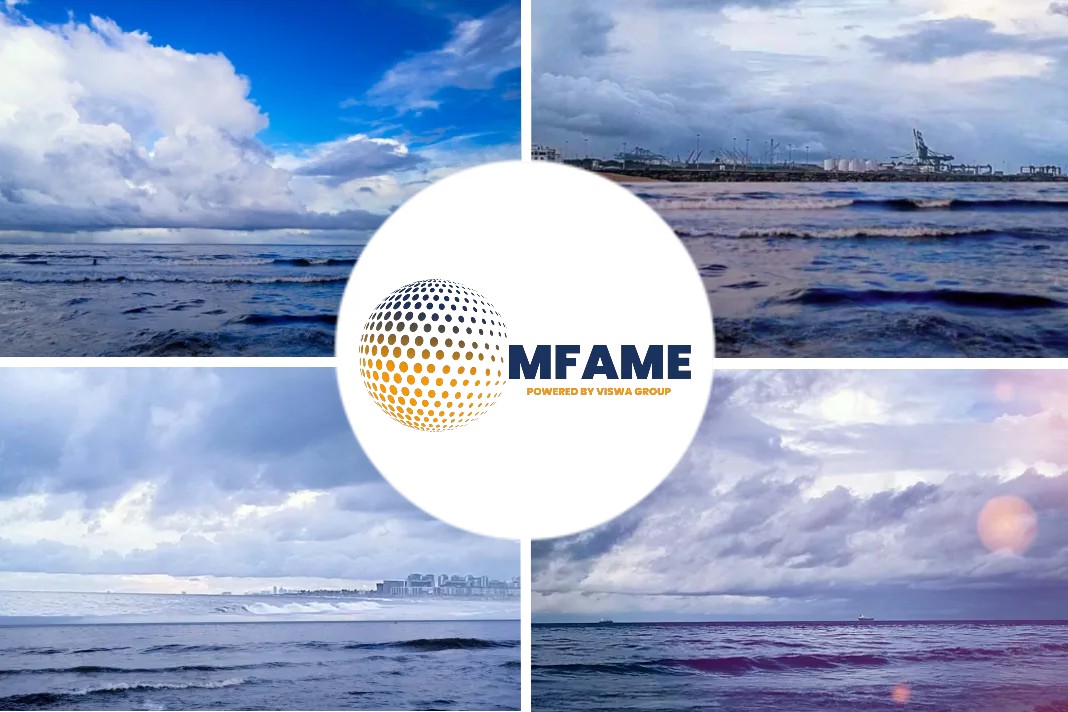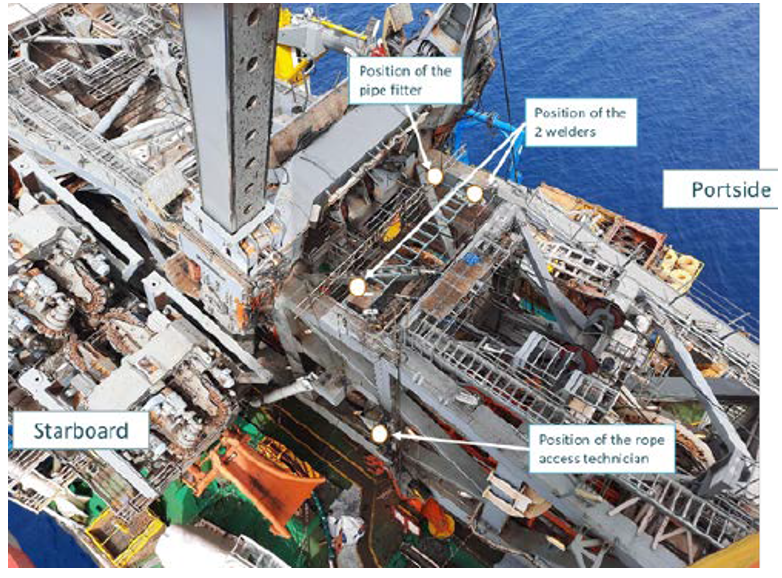
IMCA highlights a fatality due to fire incident and fall from height.
What happened
A rope access technician had a fatal fall from around 8.5m while engaged in routine maintenance activities on a pipelay tower. Work was conducted by different vessel work groups, with each team independently completing their permits to work, following the vessel’s safety management system’s requirements. The rope access technician was doing work consisting of chipping, brushing and painting. To clean the area before painting, the worker decided to bring a bucket of thinners (solvent). At the same time, another group of workers were engaged in tack welding activities at the top of the tower. Some of the welding particles fell from the welding location and ignited the bucket of thinners. The heat produced by the fire melted the rope access technician’s body harness resulting in a fatal fall from the height of approx. 8.5m.

- The potential conflict between the two activities was not properly evaluated;
- Sparks were coming down from the welding location above because of incomplete protection of the area with fire blankets;
- Thinners (solvent) were taken from the paint store without authorization and its use was not foreseen for the specific activity;
The Bahamas Maritime Authority has published Safety Alert 23-01 into this incident and highlights the following:
- Lack of full team representation and involvement in pre-planning meetings;
- Safety management system requirements were implemented, but in isolation: rendering them ineffective by other simultaneous operations;
- Inadequate high-level supervision and control for multiple activities;
- The vessel’s “stop work” policy was ineffective.
Lessons learned
Permits to Work should correctly identify all salient aspects of the job before starting any activity, including:
- All hazards and precautions to be taken by the working team
- The precise location of the work
- The exact activities for which it has been issued
- Any potential SIMOPS
All stakeholders should be involved with pre-planning meetings and tool-box meetings;
If an activity needs to be stopped, the Permit to work should be withdrawn;
While conducting simultaneous operations, effective supervision means maintaining oversight of the entire operation to enable identification of areas which overlap and the associated potential risks.
Address vessel and crew safety holistically, not as isolated departments, to ensure all teams have a unified understanding of ongoing operations and how it relates to their work. This contributes to an overarching understanding of risk, rather than just a team-specific focus;
Ensure fuller understanding and use of Stop work authority.
Did you subscribe to our daily newsletter?
It’s Free! Click here to Subscribe!
Source: IMCA

















